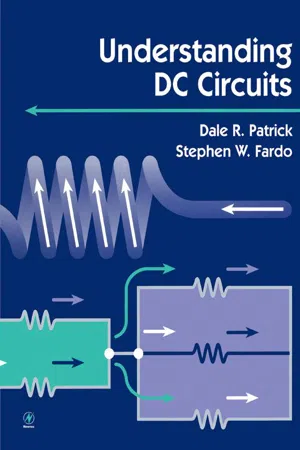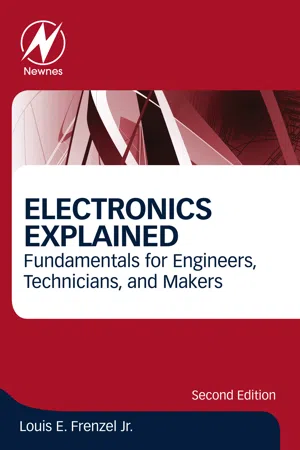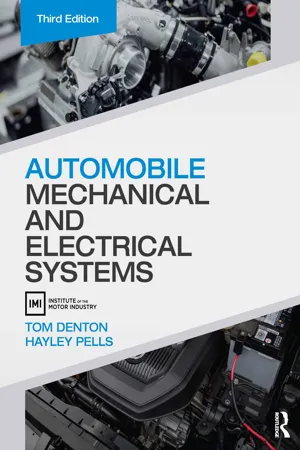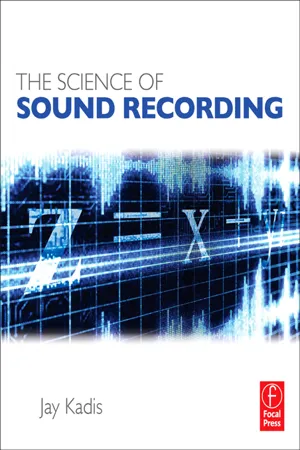Physics
Electronics and Electrical Systems
Electronics and electrical systems involve the study and application of electrical circuits, components, and devices. This field encompasses the design, analysis, and implementation of systems that utilize electrical energy to perform tasks such as signal processing, communication, and control. Understanding electronics and electrical systems is essential for various technological advancements and innovations.
Written by Perlego with AI-assistance
Related key terms
Related key terms
1 of 4
Related key terms
1 of 3
5 Key excerpts on "Electronics and Electrical Systems"
- eBook - ePub
- Dale Patrick, Stephen Fardo(Authors)
- 1999(Publication Date)
- Newnes(Publisher)
Unit 1Basics of DC Electronics
Electronics is a fascinating science that we use in many different ways. It is difficult to count the many ways in which we use electronics each day. It is important for everyone today to understand electronics.This unit deals with the most basic topics in the study of electronics. These include basic electric systems, energy and power, the structure of matter, electric charges, static electricity, electric current, voltage, and resistance. This unit and other units have definitions of important terms at the beginning. Preview these terms to gain a better understanding of what is discussed in the unit. As you study the unit, return to the definitions whenever the need arises. There are also self-examinations throughout the unit and a unit examination at the end of each unit. These will aid in understanding the material in the unit. Several experiments are suggested at the end of each unit. They may be completed in a laboratory or at home at low cost. - eBook - ePub
- DeLean Tolbert Smith, Aishwary Pawar, Nicole P. Pitterson, Debra-Ann C. Butler(Authors)
- 2022(Publication Date)
- Visible Ink Press(Publisher)
•Develop and use computer systems •Maintain electronic equipment •Prepare operational plans •Project management •Design systems for efficient and reliable operations •Identify and solve engineering design problems •Use Autodesk and AutoCAD specifically for electrical control systems •Be proficient in MATLAB •Have knowledge of raw materials, quality control, techniques, and production processesWhat tools do electrical engineers use?•Frequency calibrators and simulators •Laboratory evaporators and safety furnaces •Oscilloscopes •Scanning probe microscopes •Voltmeters or multimeters •Semiconductor process systems (for example: electron beam evaporators, wafer steppers, and wire bonders) •Signal generators •Calculators •Spectrometers •Tube furnaces •Voltage or current meters •ElectrodesELECTRICITY CONCEPTSWhat is electricity?Electricity is the physical manifestation of or a form of energy that often results from charged particles’ existence and interaction. Electricity occurs when charged particles move between positive and negative regions within a conductor.Today, electricity is widely used to power everything from small personal devices, such as cell phones, to entire cities. In the world around us, electricity is a natural occurrence and can be observed in lighting. A well-known experiment was conducted by Benjamin Franklin, who went flying his kite during a thunderstorm in 1752. Using a kite with some conductive materials (e.g., copper) and nonconductive strings (e.g., silk), Franklin discovered that lighting was electrical discharge.What is the difference between static electricity and current electricity?Static electricity develops on the substance’s surface. It is generated by friction or instant interaction of negative charges from one object to another such as rubbing two materials against each other. Static electricity occurs on objects isolated by an insulator when a buildup of opposite charges occurs. - eBook - ePub
Electronics Explained
Fundamentals for Engineers, Technicians, and Makers
- Louis E. Frenzel(Author)
- 2017(Publication Date)
- Newnes(Publisher)
You do not have to be an engineer, physicist, or mathematical genius to learn electronics. But there are a few basic things that you need to know so you can understand what is going on in the circuits and equipment. For example, you need to know that electrons are what make up current flow, and voltage is what makes the current flow. You also need to know about magnetic fields and electric fields, where they come from, what they do, and how magnetism and current flow are related. With that background you are ready to learn about the various components and circuits. This chapter takes care of those basics.Electricity and Electronics
Electricity is a type of energy produced by a charge that is either fixed (static) or moving (dynamic). The main source of electricity is the electron, a subatomic particle that has a negative charge. When electrons are stored or moved, electricity is produced.Electricity is one of our prime sources of energy. It is used for lighting, heating, and operating appliances of all sorts. It powers motors to produce mechanical energy, and it powers our electronic equipment. The uses of electricity are virtually infinite.Electronics is the field of applied science that uses components such as resistors, capacitors, diodes, transistors, and integrated circuits (ICs) to control and process electricity. These components are used to create circuits that convert, modify, vary, translate, or otherwise manipulate electrical charges to perform useful functions. That is the essence of it. Now for the details.Atoms and Electrons
This section really ought to be called Physics 101, but I do not want to scare you away. Just to make you more comfortable, I have to say that it is not all that complicated or difficult to understand. So even if you avoided physics in high school, just be aware that it is pretty easy. Trust me.All matter, whether it is a solid, a liquid, or a gas, is made up of tiny entities called atoms. An atom is the smallest possible particle of substances called elements. An element is a chemical substance that cannot be subdivided into smaller, simpler substances. Typical elements are hydrogen, oxygen, gold, silver, copper, carbon, helium, silicon, and sodium. All matter is either an element or composed of several elements. Atoms of two or more elements often combine to form new substances called compounds. For example, water is a compound of hydrogen (H) and oxygen (O) or H2 - eBook - ePub
- Tom Denton, Hayley Pells(Authors)
- 2022(Publication Date)
- Routledge(Publisher)
3 Electrical systemsDOI: 10.1201/9781003299066-33.1 Electrical and electronic principles
3.1.1 Electrical fundamentals
To understand electricity properly we must start by finding out what it really is. This means we must think very small. The molecule is the smallest part of matter that can be recognized as that particular matter. Subdivision of the molecule results in atoms. The atom is a basic unit of matter and consists of a central nucleus made up of protons and neutrons. Around this nucleus electrons are in orbit, like planets around the sun. The neutron is a very small part of the nucleus. It has an equal positive and negative charge. It is therefore neutral and has no polarity. The proton is another small part of the nucleus. It is positively charged. As the neutron is neutral and the proton is positively charged, this means the nucleus of the atom is positively charged.Figure3.1Basic representation of an atomThe electron is an even smaller part of the atom, and is negatively charged. It is held in orbit around the nucleus by the attraction of a positively charged proton. When atoms are in a balanced state the number of electrons orbiting the nucleus equals the number of protons. The atoms of some materials have electrons that are easily detached from the parent atom and join an adjacent atom. In so doing they move an electron (like polarities repel) from this atom to a third atom and so on through the material. These are called free electrons.Materials are called conductors if the electrons can move easily. However, in some materials it is difficult to move the electrons. These materials are called insulators.If an electrical pressure (voltage) is applied to a conductor, a directional movement of electrons will take place. There are two conditions for electrons to flow: a pressure source, e.g. from a battery or generator, and a complete conducting path for the electrons to move, e.g. wires. - eBook - ePub
- Jay Kadis(Author)
- 2012(Publication Date)
- Routledge(Publisher)
CHAPTER FIVE Electronics Contents Basic Electricity Passive Electronic Devices Resistors Capacitors InductorsOhm’s LawActive Electronic Devices Suggested ReadingKirchhoff’s LawsIn order to manipulate and store sounds, we need a representation that can be easily transferred from point to point, altered to suit our wishes, and stored in a permanent fashion. A simple and flexible such representation is the flow of electrons, or electricity. We use an electromechanical device, a microphone, to convert the air pressure variations of sound into an analogous flow of electrons. It is then simple to distribute the electrons through a wire to other places. It is also possible to convert the flow of electrons into magnetic flux that can be stored for a long time when retained as magnetic patterns on media such as analog tape and digital hard disks. Electronic circuits are involved in the majority of sound recording operations.Devices including recorders, amplifiers, mixers, equalizers, dynamic range processors, and delay-based effects processors give the engineer great ability to manipulate artistically the acousmatic reproduction of recorded sounds. Although these devices are complex, their operation is based on a few elementary concepts of analog electronics. Analog electronics refers to circuits in which the signal varies continuously, in contrast to digital systems that sample the signal at regular intervals. Until recently, analog was the only method available for processing audio data. Much modern sound recording and mixing involves computers, but analog electronic devices are still widely used in sound recording, especially as microphones, loudspeakers, preamplifiers, and mixers. Understanding electronic circuits starts with electricity.BASIC ELECTRICITYElectricity is simply the movement of charge (symbol q). Charge is a fundamental property of matter that has two possible states: positive and negative. (Neutral or zero charge may also be considered a state, though this is not of interest in electronics.) Like charges repel each other; opposite charges attract and can combine and cancel. Charge was theorized before the structure of the atom was understood, and it was initially assumed that positive charge flowed through electric circuits. Electric current is now known to be due predominantly to the flow of negatively charged electrons; however, current can be conducted by positive charges in semiconductors and in ionic solutions. The flow of charge can be through a resistive medium like air (lightning), through a solid conductor like a metal wire, or through a semiconducting material like silicon. The path through which the charge moves is called a circuit. The charge moves from a source through a loop of circuit elements and back to the source. For direct current (DC), the charge flows in only one direction (although its magnitude may continuously vary); for alternating current (AC), the charge flows back and forth in both directions (Figure 5-1
Index pages curate the most relevant extracts from our library of academic textbooks. They’ve been created using an in-house natural language model (NLM), each adding context and meaning to key research topics.
Explore more topic indexes
Explore more topic indexes
1 of 6
Explore more topic indexes
1 of 4




